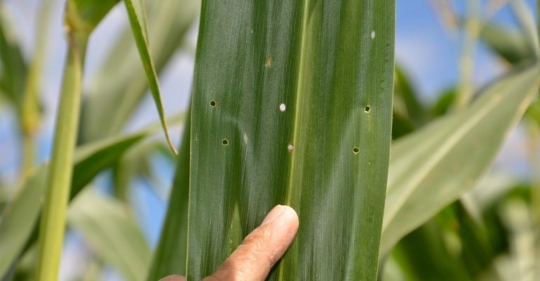Explore our blog featuring articles about farming and irrigation tips and tricks!
Shot-hole Feeding In Leaves Above Ear Leaf Tell A Story

By: Tom J Bechman
You never know what you may find if you keep your eyes peeled while scouting cornfields. In one field, a consultant found the leaf pictured here. It exhibits what appears to be shot-hole feeding. That type of feeding occurs when an insect larva chews through leaves in the whorl. Once the leaves unfurl, there is a pattern of holes made by the insect chewing its way through leaves that were still rolled up.
Typically, people find shot-hole feeding earlier in the season, when corn is knee- to waist-high. It’s often attributed to first-generation European corn borer. Finding it hasn’t been as common since many farmers have shifted to Bt hybrids with protection against aboveground pests, particularly European corn borer.
What is unusual about this leaf with shot holes, which was found on a late-season scouting trek, is that it was high on the plant — well above the ear leaf. Having done his homework, the consultant who found the leaf knew that one hybrid within the field did not have Btprotection for aboveground pests. So he began to suspect insect damage.
Puzzle pieces
But how did the damage occur on leaves higher up in the plant? The consultant turned to John Obermeyer, Purdue University Extension entomologist, for answers. “Leaves which emerge later in the season are still rolled up in the whorl at some point before they emerge,” Obermeyer says. “If an insect larva was present then, it could have chewed through the leaves, just like a larva would chew through leaves in the whorl earlier in the season.”
Stay up to date on all T-L news and get alerts on special pricing!


